Corner desk for two children: sizes and features of choice
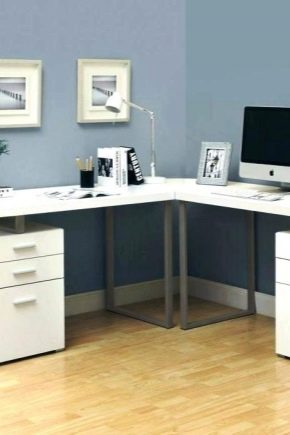
It is quite a standard situation when two children live in one room. If you choose the right furniture, you can organize a sleeping, play, study area in the nursery, there will be enough space for storing things. Each piece of furniture must be functional and ergonomic so that the maximum payload is carried out with a minimum occupied area. A corner table for two children meets these requirements in the best possible way.

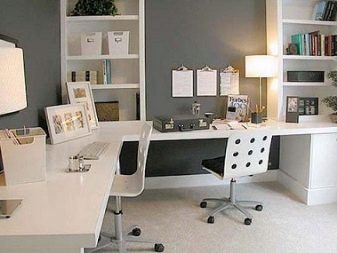
Positive sides
With a space shortage, one table is always better than two.
The advantages of such furniture are obvious:
- an empty corner will function;
- the corner structure has more usable area than the standard one;
- for kids, you can purchase a compact table, it will take up very little space in the corner, and each child will have their own work surface for children's creativity;
- corner tables come in various configurations, and if you cannot find furniture by the size of your corner, you can always order it from the factory according to individual calculations;
- children can learn lessons without interfering with each other, as they are deployed in different directions.
Corner tables differ in design, size, color, materials, stylization. They have different equipment with shelves, pedestals, racks.
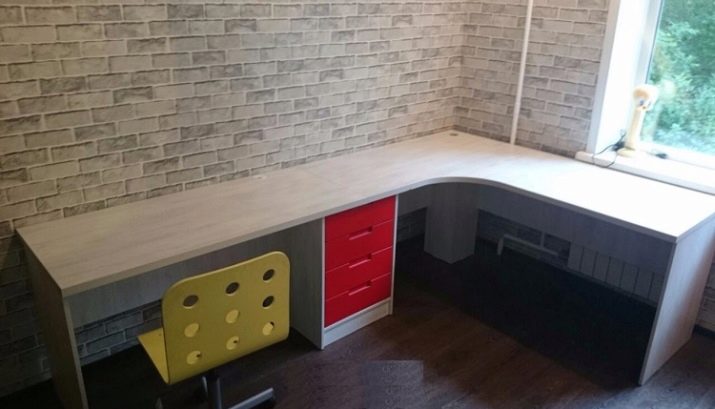
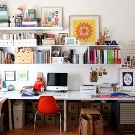
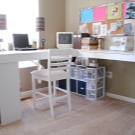

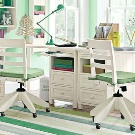

Design
Structurally, the models can be right-handed, left-handed, symmetrical. For children with a small age difference, it is better to purchase symmetrical options, then each child will have equal conditions for classes. Asymmetric furniture (with the letter G) is suitable for children with a noticeable age difference. Most of the surface will be occupied by the one who has to work harder. Often, two equal workplaces are organized at an asymmetric table, and a monitor or other equipment is installed on the rest of the long tabletop.
Sometimes there are specific angles or non-standard situations when furniture has to be ordered according to individual sizes. For example, the room has a furniture set (wall) with a small computer desk for one student. Over time, the second child grew up, and there was a need for another job.
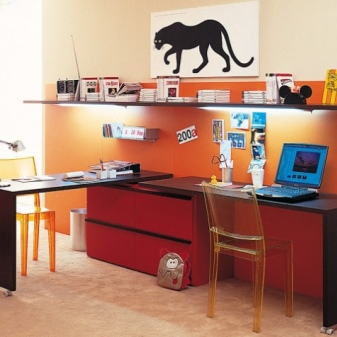
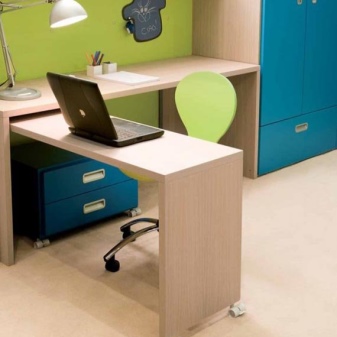
In this case, a section of furniture with a table should be placed at the beginning or end of the headset, remove the small tabletop and order the corner surface of the table according to your own sketches and dimensions. Thus, a large L-shaped table is obtained, one part of which lies on the curbstones of the furniture wall, and the other turns, creating an angle and resting on the legs of chrome pipes.
If there is not enough storage space in the room, you should think about purchasing a corner table with such sections. The corner will be occupied not only by the countertop, but also by the superstructure above it in the form of a rack, closed and open shelves. Under the table there can be cabinets with drawers, closed shelves, as well as a place for a computer and a pull-out shelf for a keyboard. Some models are equipped with mobile pedestals on casters, they can be easily removed from under the table top and rolled to any other place.
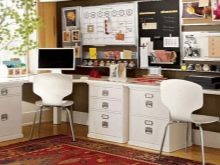
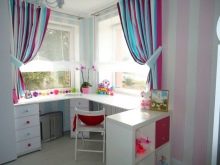
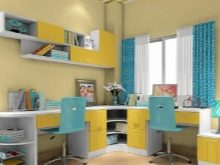
Dimensions (edit)
Corner tables for two children are rarely transformers, they cannot "grow" with the child. You need to buy a model by size or for growth, and solve the problem of height with the help of an adjustable chair.
There are standards for writing desks, developed without regard to age:
- height - 75 cm;
- width - 45-65 cm;
- the workplace, taking into account the location of the elbows - at least 150 cm wide for one person;
- legroom under the table should be 80 cm;
- superstructures can be of any height, but it is convenient to use the shelves at arm's length;
- the size between the shelves ranges from 25 to 50 cm, depending on the purpose;
- the depth of the shelves - 20-30 cm;
- cabinet width 40 cm, depth 35-45 cm.

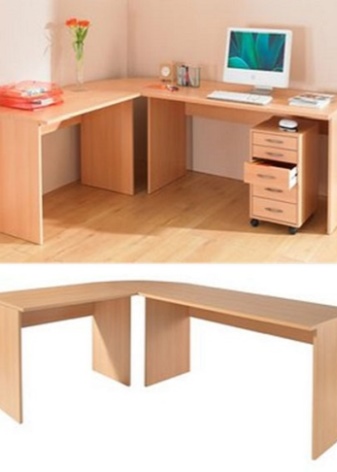
When choosing a table for a kid, you should pay attention to models where the table top is 2-3 cm higher than the elbow joint (if the child is standing at the table). Sitting, the distance between the knees and the table top is about 15 cm.
The table is sized correctly if the end coincides with the child's solar plexus. The length of the table top should allow both children to practice freely, without touching each other with their elbows, that is, not less than a meter for each.
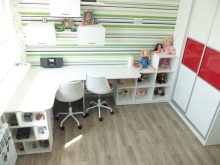
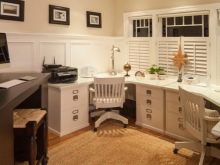
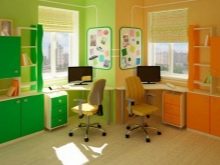
Location in the room
The optimal location of the corner table (taking into account the lighting) will be to rotate the table top from the right wall to the window area. For left-handers, a left-handed table is suitable. In this way, both babies will get enough daylight. For any other arrangement of furniture, you should use additional light sources in the form of table or wall lamps.
When placing the table by the window, you should make sure that there are no drafts. If there is a radiator under the window, it is necessary to leave a gap between the table and the window sill for warm air circulation.
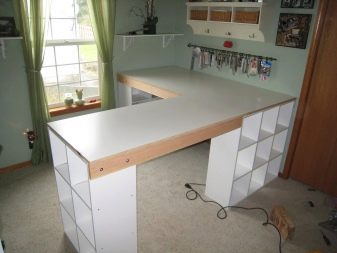
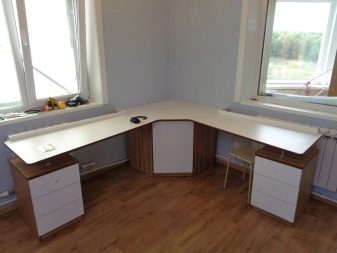
Such a hole should be foreseen immediately if an individual order is made for a corner tabletop combined with a window sill.
Such structures should occupy a corner if the room is small. In a spacious children's room, the table can be installed so that it creates a square mini-cabinet or even in the center of the room, dividing it into a play and work area. You can also prozone the table itself, creating a place for each child. Children's zones are separated by a pull-out cabinet, a rotary shelf, an office partition made of plexiglass. The shelves and drawers are distributed equally. For kids, you can buy colorful furniture, it will be easier for them to remember their shelves.

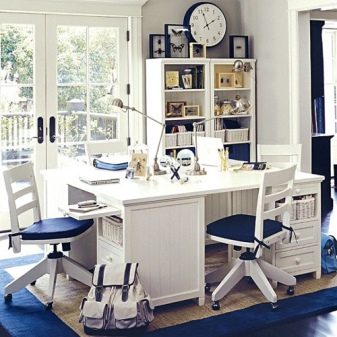
Material
The material from which the table is made, affects the appearance and cost of furniture.
- Made of solid wood, the product looks presentable and is expensive. Such a purchase is environmentally friendly, practical and durable.
- Chipboard is the most common and budgetary option for furniture, it looks quite acceptable. At a table made of chipboard, over time, the ends can be rubbed, the corners are easily beaten off. Such material does not tolerate moisture well, but this moment is not an obstacle for a children's room.
- Furniture made of MDF is more expensive, but safer, since less toxic resins are used for its manufacture. On MDF boards, prints of all kinds of patterns are well done, the edge is rounded.
- Glass tables are teenage options and support urban styles (hi-tech, techno, minimalism).
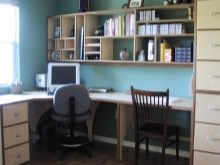
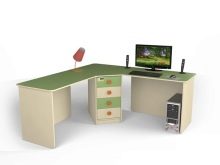
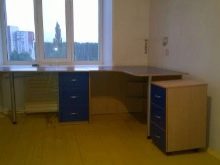
How to make a choice?
Choosing a table, there are many factors to consider.
- The correct height will protect the child from scoliosis. If the height is adjusted by the chair, an additional footrest should be purchased.
- Even before buying furniture, you need to decide on the place, then it will become clear which table is needed (left-sided, right-sided, symmetrical).
- The specific smell of the glue indicates its toxicity, if in doubt, you need to ask the seller for a quality certificate.
- The table top should not have sharp corners.
- The color and style of the model is matched to the decor in the room.
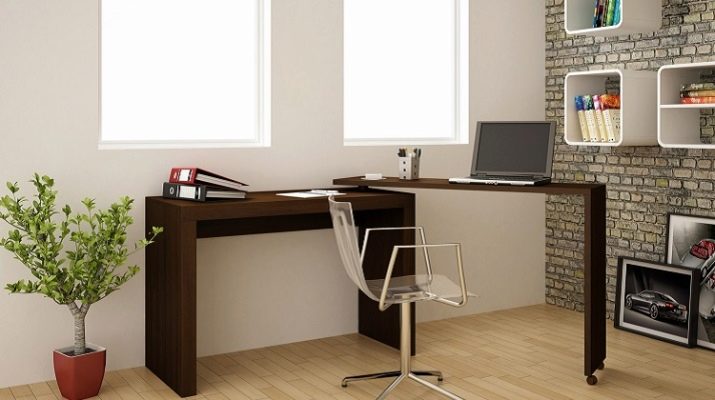
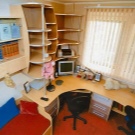
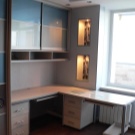
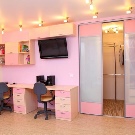
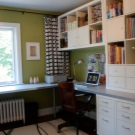
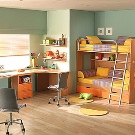
The variety of corner tables allows you to match them to any interior, take into account the design features, color, texture and wishes of children. Such tables will fully replace student desks and become a favorite place for creativity, leisure and study.
For information on how to make a corner desk for two children with your own hands, see the next video.













The comment was sent successfully.